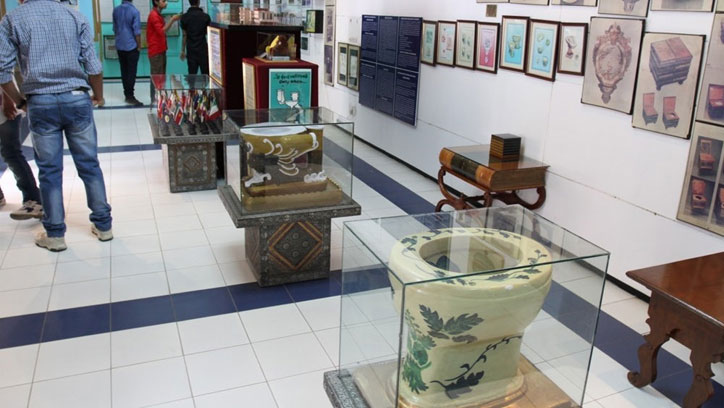 New Delhi:
New Delhi: Full of strange facts and objects, our museums and history books carry some very interesting stories from bygone times. But one peculiar piece that doesn't find space anywhere is about a French monarch's struggle with constipation that led him to have a commode built under his throne.
Height of glory for toilets was reached when King Louis XIV gave audience while using it, prompting his court jester to remark that he found it a bit strange that while the king preferred to eat in privacy, he chose to ease himself in public.
The replica of his throne is on display at the Sulabh International Museum of Toilets, in the Dwarka area of west Delhi, which traces 4,500 years of history of toilets.
Not as big as other museums in the city, Sulabh has an amazing collection of intriguing facts, pictures and objects detailing the evolution of sanitation from 2,500 BC to date.
The very fact that there is a museum that displays types of toilet seats -- from wooden to ornamental, from electric to floral, may come as a surprise to many.
Sulabh was established by social reformer Bindeshwar Pathak with the help of curators like Frittz Lischka from Austria and 80 to 90 other professionals around the world.
"It was established with objectives of educating and exploring historical trends in development of toilets across the world," Museum Curator Bageshwar Jha said.
The existence of toilet facilities has a long history, possibly older than that of the Roman Empire.
Sanitation has been the index of civilisation and the museum artefacts are displayed chronologically to map the developments beginning from the Indus Valley civilisation during the third millennium BC progressing on to the latest developments till the end of the 20th century.
Tracing the history of the evolution of toilets seems a bit ironical in India, where, even today, many people defecate in the open, often near railway tracks. But India was one of the pioneers in this field.
Excavations at Mohenjo-Daro confirm the existence of common baths and private toilets in households.
The exhibition room displays write-ups on and drawings and replicas of toilets and sanitation practices from ancient Egypt, Babylonia, Greece, Jerusalem, Crete and Rome.
According to the literature published by the museum, there was a lot of jest and humour relating to toilet habits and toilet appurtenances.
"There was a time when ballets were performed with basket of night soil in the form of hood, on the head or a tin plate commode moving around with toilet sounds. The clothes were spotted with accessories from the toilet," Sulabh Assistant Curator Shikha Verma said.
Britain in ancient times created fantasies in stoneware toilets and bath.
Ornately carved and painted urinals and commodes from the country attract attention and are a source of amusement. The pictures of medieval water closets at the museum are worthy of mention.
A replica of the medieval mobile commodes in the shape of a treasure chest, which the English used while camping out for a hunt, also finds space at the museum.
"A few years ago, French artist Benjamin Zilberman gifted the model of Mr. Pee and Poo to the museum," said Jha.
"A man named Giri Kumar from Andhra Pradesh sent to us a model of a convertible seat designed by him. The seat can be used both in the Indian and also in the western style according to one's convenience," he added.
"Toilet is a part of the history of human hygiene, which is a critical chapter in the history of human civilisation and cannot be isolated," the curator said.
Jha laments the fact that personal and community hygiene and the "well-being of entire humanity" did not get the attention it deserved.
Entry is free to the museum open on all days except national holidays.
 New Delhi: Full of strange facts and objects, our museums and history books carry some very interesting stories from bygone times. But one peculiar piece that doesn't find space anywhere is about a French monarch's struggle with constipation that led him to have a commode built under his throne.
New Delhi: Full of strange facts and objects, our museums and history books carry some very interesting stories from bygone times. But one peculiar piece that doesn't find space anywhere is about a French monarch's struggle with constipation that led him to have a commode built under his throne.